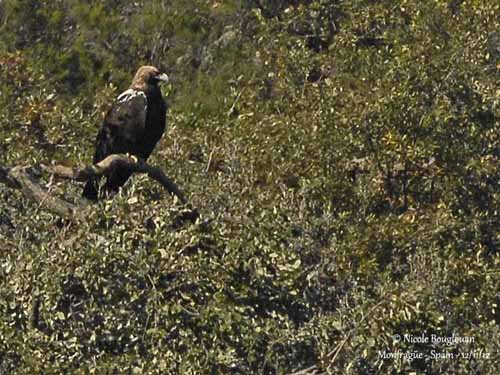
Spanish Imperial Eagle
Aquila adalberti
Accipitriforme Order – Accipitridae Family
BIOMETRICS:
Length: 74-85 cm; Wingspan: 177-220 cm; Weight: 2,5-3,5 kg
LONGEVITY: up to 44 years in captivity
DESCRIPTION:
Spanish Imperial Eagle is classified as Endangered species. It has restricted habitat and numerous threats make of this eagle the rarest bird of prey in the world.
Both sexes are similar, with female slightly larger than male.
Juvenile and immature are paler than adults, with white streaks and patches. Plumage turns darker little by little. They need up to 5-6 years to get the adult plumage.
VOICE: SOUNDS BY XENO-CANTO
The Spanish Imperial Eagle utters series of bark-like calls “krao-krao”. This eagle calls mainly during the breeding season, and to defend its hunting area against other birds of prey. It is rather silent outside of breeding period.
BEHAVIOUR:
The Spanish Imperial Eagle is often seen perched in treetops or electric pylons or towers during the day.
It hunts in open areas, flying and soaring relatively low from the ground. When a prey is detected, it dives and captures it with its strong talons.
Its preferred preys are rabbits and hares, but it also takes other mammals, birds, and reptiles such as lizards. Sometimes, it may feed on fish and insects, and also carrion. Reptiles and insects are taken while walking on the ground.
Birds are mainly taken on the ground or when perched in open place, at the tip of a branch. It also catches young birds at nest.
The Spanish Imperial Eagle cannot pursue birds in flight, due to its great size, making impossible to enter the tree branches or bushes where the scared birds hide. It is able to catch preys from 500 to 2500 grams. It hunts mainly in the morning and at the end of the afternoon until dusk.
FLIGHT:
The Spanish Imperial Eagle performs beautiful flight displays.
It flies low from the ground for hunting, and soars in order to detect preys. The broad wings allow the bird to soar and glide easily, with few wing-beats.
Female lays 2 or 3 eggs, between mid-February and late March, sometimes later. Eggs usually are whitish, speckled with grey and brown. Both sexes incubate, but mainly the female which is fed at nest by the male.
The incubation lasts about 43 days. The chicks are covered with white down. Usually, the smallest dies, but sometimes, all the chicks grow successfully. They are aggressive as soon as they hatch.
They are fully feathered at 55-60 days of age, and they remain near the nest one month more. They return regularly at the nest-site and the members of the family may spend the winter together.
The Spanish Imperial Eagle may have 3 to 5 different nests, mainly in corn-oaks or pines, at about 10 to 25 metres above the ground. This species breeds between 300 and 900 metres of elevation, but sometimes up to 1500 metres in mountain areas.
DIET:
The Spanish Imperial Eagle feeds mainly on rabbits and hares, but it also captures birds such as Greylag Goose, coots, ducks, pigeons and magpies. It catches them often on the ground diving from a perch, or sometimes by soaring, taking the bird perched in open, at the tip of a branch. It also consumes reptiles and insects taken by walking on the ground, some fish and carrion.
Fr: Aigle ibérique
All: Spanischer Kaiseradler
Esp: Águila Imperial Ibérica
Ital: Aquila imperiale spagnola
Nd: Spaanse Keizerarend
Sd: Spansk kejsarörn
Port: Águia-imperial-ibérica
Photographs and text by Nicole Bouglouan
Sources:
HANDBOOK OF THE BIRDS OF THE WORLD Vol 2 by Josep del Hoyo-Andrew Elliot-Jordi Sargatal - Lynx Edicions - ISBN: 8487334156
GUIDE DES RAPACES DIURNES – Europe, Afrique du Nord et Moyen-Orient de Benny Génsbol – Delachaux et Niestlé – ISBN : 2603013270
Pájaros de España (JL Beamonte)
BirdLife International (BirdLife International)
Wikipedia (Wikipedia, The Free Encyclopaedia)
Ornithomedia - Le Web de l’Ornithologie

Adult male is very similar to the Eastern Imperial Eagle (Aquila heliaca), but the Spanish Imperial Eagle shows conspicuous white leading edges of the wings on the lesser coverts.
The plumage is reddish-brown overall, without any streaks, but we can see several irregular white patches on scapulars. The tail is greyish-brown with broad darker terminal band.
On the brown underparts, underwing shows black wing coverts and paler flight feathers.
On the head, crown, face and nape are creamy-white, whereas the forehead is dark brown. The strong hooked bill is dark grey with yellow cere. The eyes are dark brown. The feathered legs are dark brown, and talons are yellow.
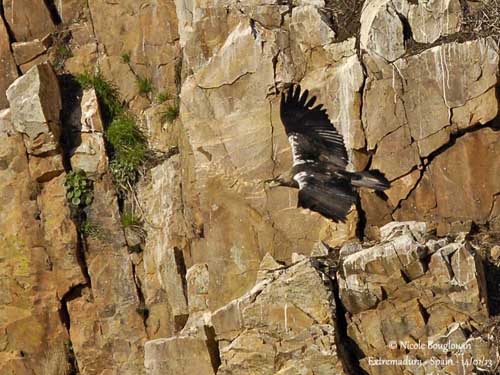
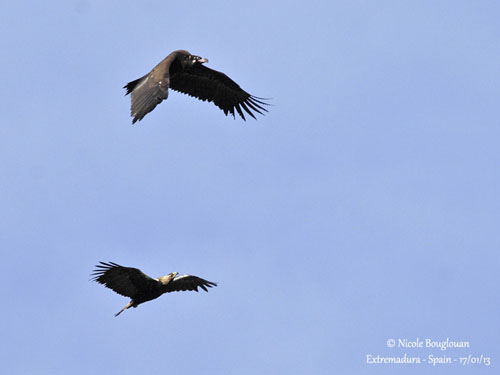
HABITAT: The eagle in its favourite habitat
The Spanish Imperial Eagle lives in cork-oak plantations, as in plains or hills. It can be seen in marshes, along the streams and in steppes with scattered isolated trees.
RANGE:
The Spanish Imperial Eagle is resident in Spain, mainly in Extremadura and Andalucía, in mountains such as Sierras of Guadarrama and Gredos, along the Tajo and Tietar rivers, and in marshes in the Guadalquivir area.
This species is extinct in Morocco, but it is slowly increasing in Portugal after extinction.
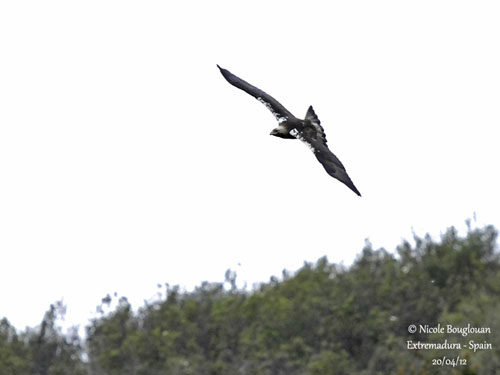
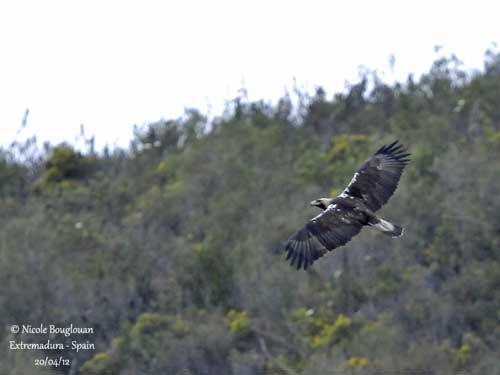
The Spanish Imperial Eagle is resident in its range. It lives in territories of variable sizes, and according to the food resources, several pairs may nest in the same area.
It is territorial and defends its area against other raptors, even the largest.
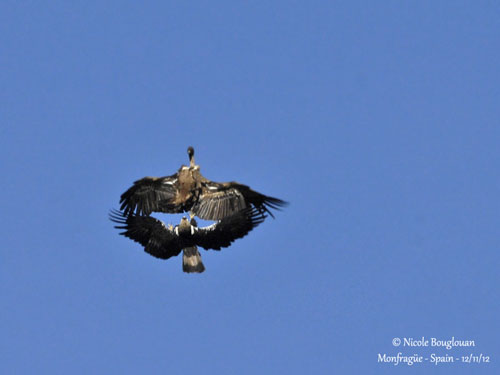
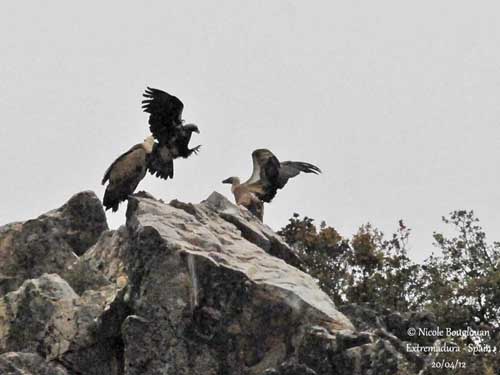
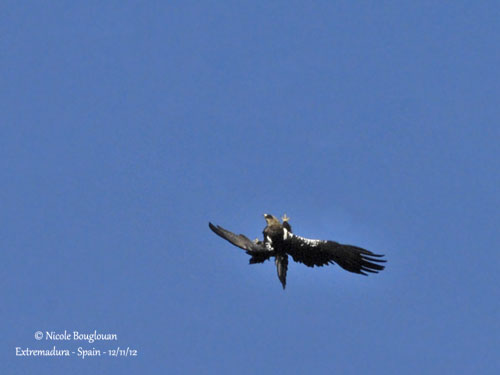
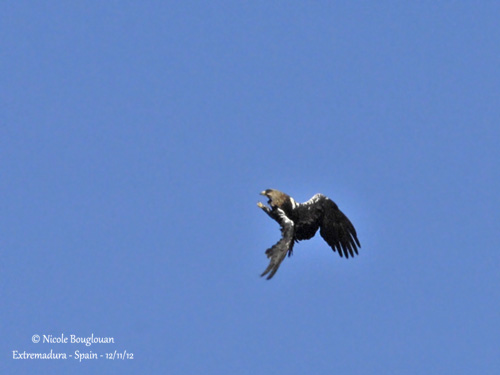
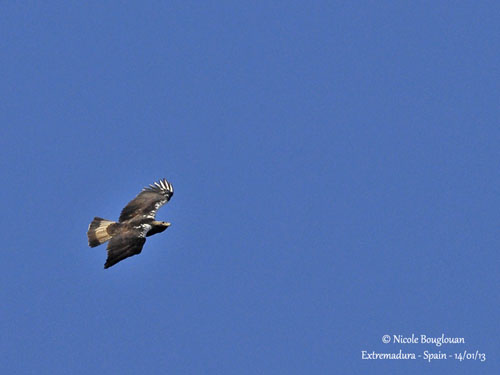
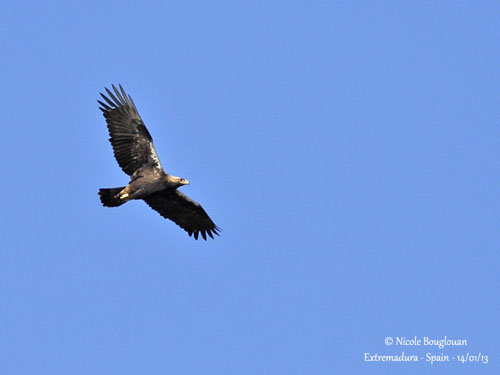
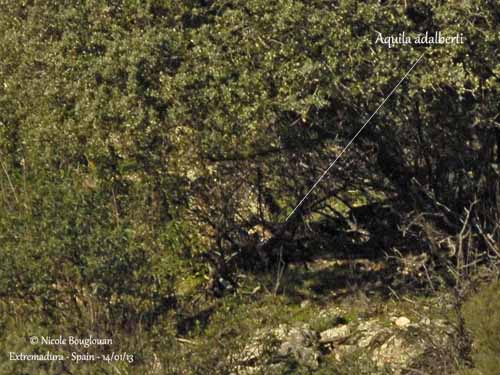
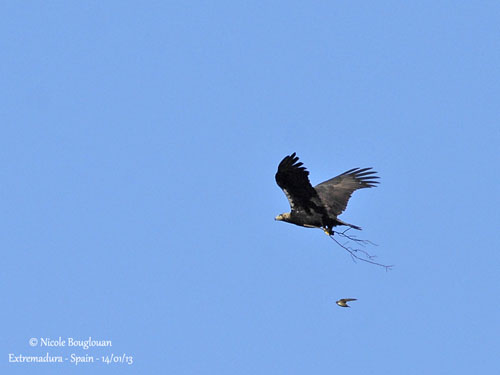
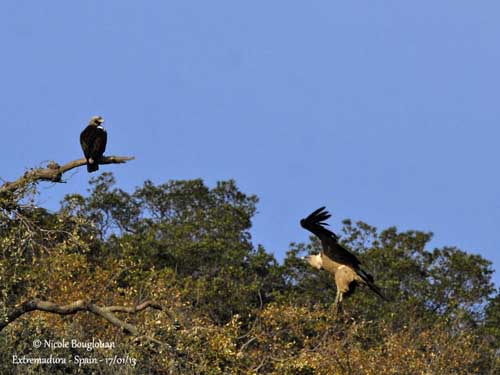
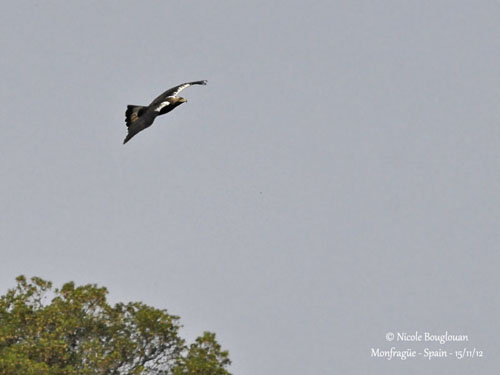
PROTECTION / THREATS / STATUS:
The Spanish Imperial Eagle is an endangered species, living in restricted areas in Spain. The species is threatened by poisoning, habitat loss, human disturbances, electrocution, trapping in rabbit-traps and the decline of rabbit’s populations.
The species is slightly colonizing Portugal again with 11 pairs. In Spain, there are currently 396 pairs (Census 2013). But it is still listed as Vulnerable.
Update: The last counts gave 536 pairs in Spain in 2017, but in 2021, there were 821 pairs present in Spain.
The most important threat is the increasing use of poisoning.
However, the small numbers of pairs are slowly increasing, thanks to important protection measures and increase of protected areas.
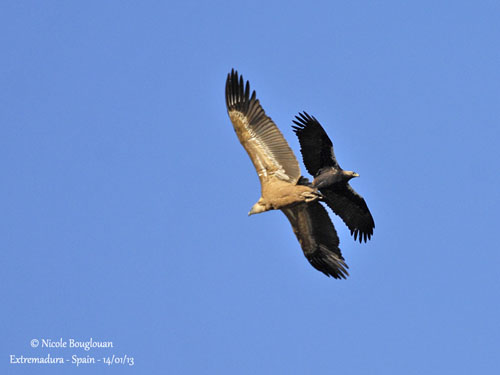
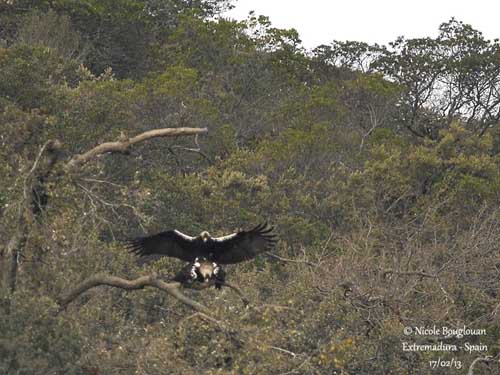
Flying with a